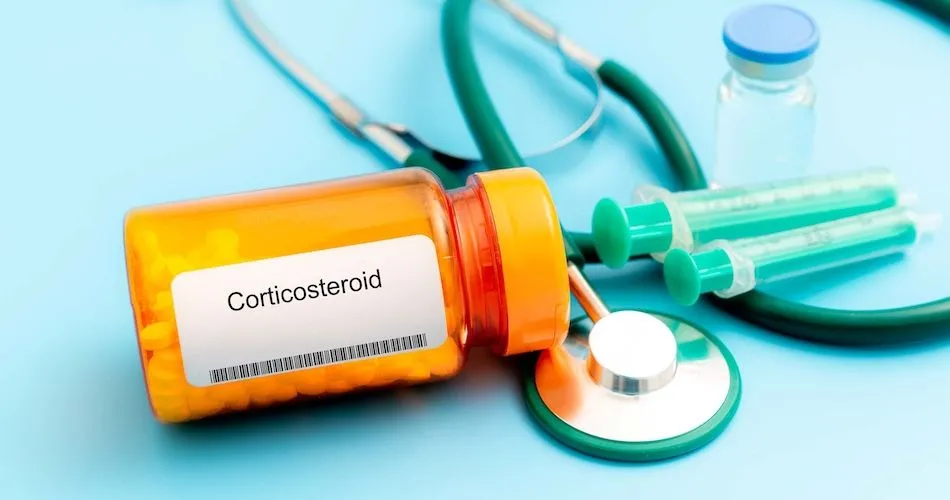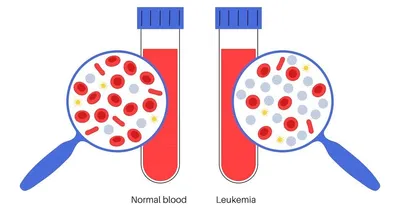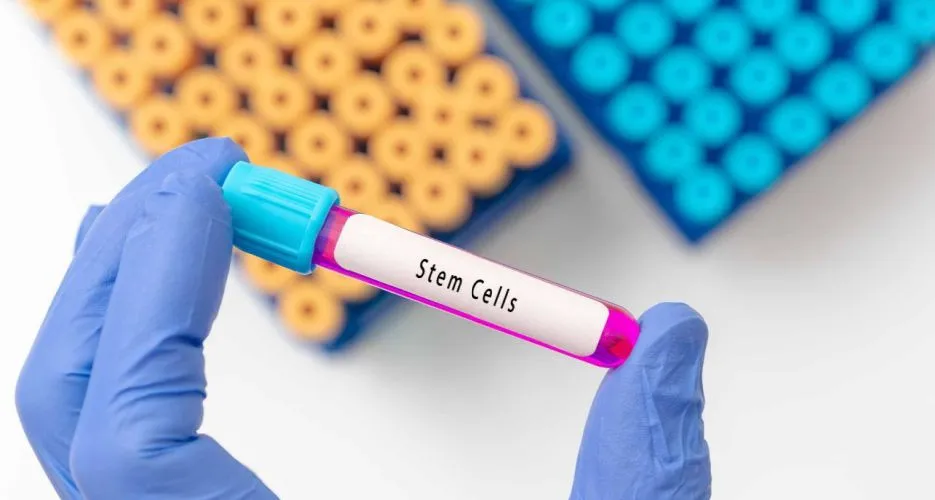What Does Erythrocytosis Mean?

Erythrocytosis occurs when the red blood cells are extremely elevated, damaging normal blood circulation and the body’s function.
Erythrocytes are red blood cells whose main function is transporting oxygen and nutrients through the bloodstream, circulating to reach every organ. They are called that because of their red color (erythros in Greek means red). Several conditions can affect the number of these cells.
Cytosis is a Latin suffix referring to cells. Latin and Greek etymologies are commonly used for medical terms. Cytosis means there are cells or a lot of cells, while cytopenia means fewer or scarce cells.
A blood sample can be used to determine the number of red blood cells with a lab test called complete blood count (CBC). Physicians can examine an estimated blood count and, most importantly, the levels of hemoglobin.
Hemoglobin is a protein present in all red blood cells and helps carry oxygen. The normal amount of hemoglobin in blood is 12.1-15.9 g/dL, although this range varies slightly according to age and sex. Erythrocytosis is associated with hemoglobin levels over 16 g/dL, while when hemoglobin is less than 12 g/dL, it may indicate the presence of a condition called anemia.
Which Lab Tests Provide Information About Red Blood Cell Levels?
- Hemoglobin (Hb): This protein within red blood cells carries oxygen. Normal levels typically range from 12.1 to 15.9 grams per deciliter (g/dL) for adults.
- Hematocrit (Hct): This test measures the percentage of your entire blood volume that's made up of red blood cells. A normal hematocrit level usually falls between 34.3% and 46.6%.
- Mean corpuscular volume (MCV): This value indicates the average size of your red blood cells. Generally, a healthy MCV falls within the range of 26.5 to 32.6 picograms (pg).
- Mean corpuscular hemoglobin concentration (MCHC): This test measures the average amount of hemoglobin present inside a single red blood cell. Normal MCHC levels typically range from 32.7 to 36.9 grams per deciliter (g/dL).
- Red cell distribution width (RDW): This test reflects the variation in the size and concentration of your red blood cells. A lower RDW indicates a more uniform cell size and cell count, while a higher RDW suggests a greater variation. The normal range for RDW is generally between 10.8% and 14.1%.
- Iron panel: Iron is a crucial mineral for hemoglobin and red blood cell production. An iron panel typically includes tests for serum iron, ferritin, transferrin, and total iron binding capacity (TIBC). These values help doctors assess your body's iron stores, which can affect red blood cell production.
Of note, the normal values shared above are reference ranges, but this can vary slightly by institution and by patients’ sex and age.
What Causes Erythrocytosis?
Erythrocytosis is a secondary condition, meaning that it is the result of an underlying illness. That’s why it is also called secondary polycythemia.
Erythrocytosis most often develops as a response to chronic low oxygen levels in the blood. The body’s response is to increase red blood cells to transport more oxygen. The most common causes of low oxygen levels include:
- Obstructive sleep apnea
- Hypoventilation syndrome, common in people with obesity: a condition where respiration is abnormally slow, and the body accumulates too much carbon dioxide in the blood and not enough oxygen.
- Chronic obstructive pulmonary disease (COPD): a common lung disease causing restricted airflow and breathing problems.
- Testosterone replacement therapy because it stimulates hormones that can increase red blood cell levels.
- Heavy and chronic cigarette smoking
Other causes of erythrocytosis that wouldn’t be directly associated with low oxygen levels are:
- History of heart valve or heart surgery
- Erythropoietin-secreting tumors, like hepatocellular carcinoma, renal cell carcinoma, and adrenal adenoma. Erythropoietin is a hormone secreted by the kidney that stimulates the growth of red blood cells.
How Is Erythrocytosis Treated?
Since it is a secondary condition with multiple possible causes, the main goal is to treat the underlying cause. However, there is a treatment for those patients whose red blood cell volumes cause circulation issues.
Large amounts of red blood cells can make the blood thicker and harder to flow through small blood vessels.
Especially when hematocrit is higher than 60%-65%. These patients may experience symptoms such as impaired alertness, dizziness, headaches, and compromised exercise tolerance and may face increased risk for blood clots, strokes, heart infarction, and deep venous thrombosis. For those cases, treatment with phlebotomy is indicated.
Phlebotomy is a simple procedure where a healthcare professional removes a specific amount of blood from your body. By removing some blood, phlebotomy helps:
- Reduce the number of red blood cells: This lowers your blood's thickness and improves circulation.
- Decrease the risk of blood clots: Thick blood is more likely to form clots, which can be dangerous.
Unlock Personal Insights Into Your Diagnosis for Free with HealthTree Cure Hub!
By securely creating a free account in HealthTree Cure Hub, you can stay updated on treatment advances, news, and education on your disease. Sign up for a free patient account today to get started. You can, too, contribute to finding a cure and help us do research!
Source:
Erythrocytosis occurs when the red blood cells are extremely elevated, damaging normal blood circulation and the body’s function.
Erythrocytes are red blood cells whose main function is transporting oxygen and nutrients through the bloodstream, circulating to reach every organ. They are called that because of their red color (erythros in Greek means red). Several conditions can affect the number of these cells.
Cytosis is a Latin suffix referring to cells. Latin and Greek etymologies are commonly used for medical terms. Cytosis means there are cells or a lot of cells, while cytopenia means fewer or scarce cells.
A blood sample can be used to determine the number of red blood cells with a lab test called complete blood count (CBC). Physicians can examine an estimated blood count and, most importantly, the levels of hemoglobin.
Hemoglobin is a protein present in all red blood cells and helps carry oxygen. The normal amount of hemoglobin in blood is 12.1-15.9 g/dL, although this range varies slightly according to age and sex. Erythrocytosis is associated with hemoglobin levels over 16 g/dL, while when hemoglobin is less than 12 g/dL, it may indicate the presence of a condition called anemia.
Which Lab Tests Provide Information About Red Blood Cell Levels?
- Hemoglobin (Hb): This protein within red blood cells carries oxygen. Normal levels typically range from 12.1 to 15.9 grams per deciliter (g/dL) for adults.
- Hematocrit (Hct): This test measures the percentage of your entire blood volume that's made up of red blood cells. A normal hematocrit level usually falls between 34.3% and 46.6%.
- Mean corpuscular volume (MCV): This value indicates the average size of your red blood cells. Generally, a healthy MCV falls within the range of 26.5 to 32.6 picograms (pg).
- Mean corpuscular hemoglobin concentration (MCHC): This test measures the average amount of hemoglobin present inside a single red blood cell. Normal MCHC levels typically range from 32.7 to 36.9 grams per deciliter (g/dL).
- Red cell distribution width (RDW): This test reflects the variation in the size and concentration of your red blood cells. A lower RDW indicates a more uniform cell size and cell count, while a higher RDW suggests a greater variation. The normal range for RDW is generally between 10.8% and 14.1%.
- Iron panel: Iron is a crucial mineral for hemoglobin and red blood cell production. An iron panel typically includes tests for serum iron, ferritin, transferrin, and total iron binding capacity (TIBC). These values help doctors assess your body's iron stores, which can affect red blood cell production.
Of note, the normal values shared above are reference ranges, but this can vary slightly by institution and by patients’ sex and age.
What Causes Erythrocytosis?
Erythrocytosis is a secondary condition, meaning that it is the result of an underlying illness. That’s why it is also called secondary polycythemia.
Erythrocytosis most often develops as a response to chronic low oxygen levels in the blood. The body’s response is to increase red blood cells to transport more oxygen. The most common causes of low oxygen levels include:
- Obstructive sleep apnea
- Hypoventilation syndrome, common in people with obesity: a condition where respiration is abnormally slow, and the body accumulates too much carbon dioxide in the blood and not enough oxygen.
- Chronic obstructive pulmonary disease (COPD): a common lung disease causing restricted airflow and breathing problems.
- Testosterone replacement therapy because it stimulates hormones that can increase red blood cell levels.
- Heavy and chronic cigarette smoking
Other causes of erythrocytosis that wouldn’t be directly associated with low oxygen levels are:
- History of heart valve or heart surgery
- Erythropoietin-secreting tumors, like hepatocellular carcinoma, renal cell carcinoma, and adrenal adenoma. Erythropoietin is a hormone secreted by the kidney that stimulates the growth of red blood cells.
How Is Erythrocytosis Treated?
Since it is a secondary condition with multiple possible causes, the main goal is to treat the underlying cause. However, there is a treatment for those patients whose red blood cell volumes cause circulation issues.
Large amounts of red blood cells can make the blood thicker and harder to flow through small blood vessels.
Especially when hematocrit is higher than 60%-65%. These patients may experience symptoms such as impaired alertness, dizziness, headaches, and compromised exercise tolerance and may face increased risk for blood clots, strokes, heart infarction, and deep venous thrombosis. For those cases, treatment with phlebotomy is indicated.
Phlebotomy is a simple procedure where a healthcare professional removes a specific amount of blood from your body. By removing some blood, phlebotomy helps:
- Reduce the number of red blood cells: This lowers your blood's thickness and improves circulation.
- Decrease the risk of blood clots: Thick blood is more likely to form clots, which can be dangerous.
Unlock Personal Insights Into Your Diagnosis for Free with HealthTree Cure Hub!
By securely creating a free account in HealthTree Cure Hub, you can stay updated on treatment advances, news, and education on your disease. Sign up for a free patient account today to get started. You can, too, contribute to finding a cure and help us do research!
Source:

about the author
Jimena Vicencio
Jimena is an International Medical Graduate and a member of the HealthTree Writing team. She has a passion for languages and is currently learning Japanese. In her free time, she loves playing with her cats. Jimena is also pursuing a bachelor's degree in journalism.
More on Core Education
Trending Articles
Get the Latest Chronic Eosinophilic Leukemia Updates, Delivered to You.
By subscribing to the HealthTree newsletter, you'll receive the latest research, treatment updates, and expert insights to help you navigate your health.
Together we care.
Together we cure.
3x Faster.









